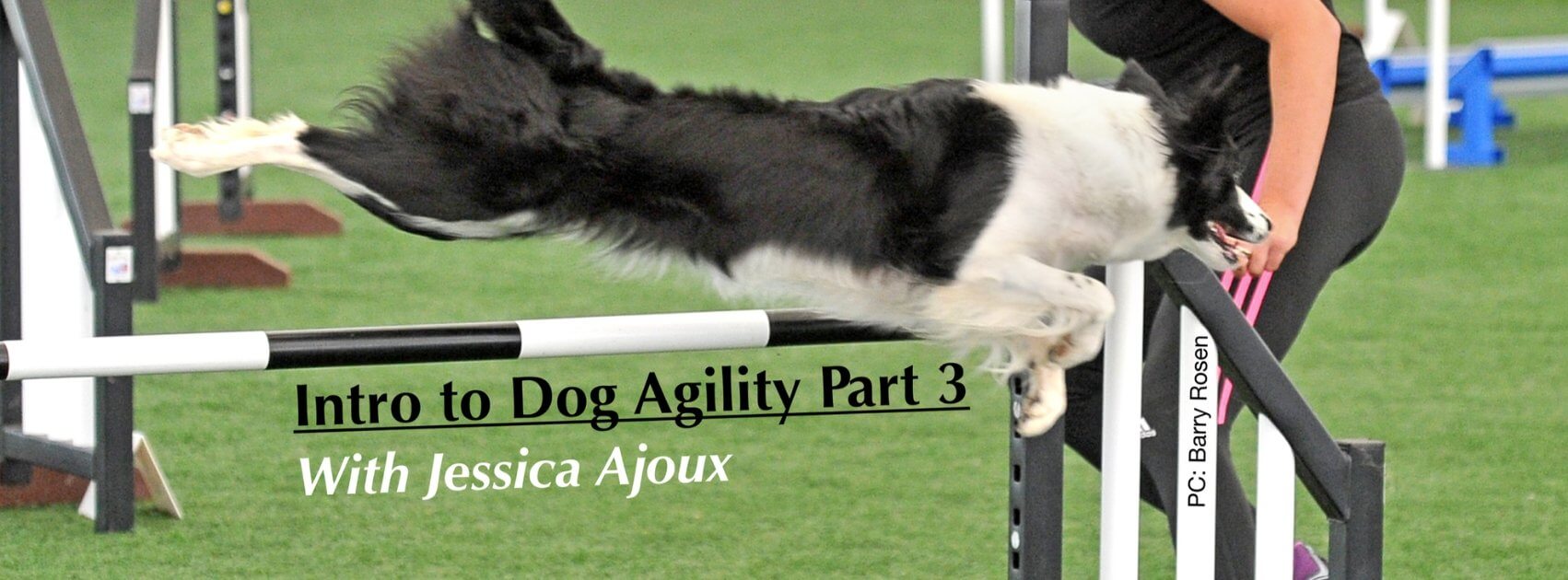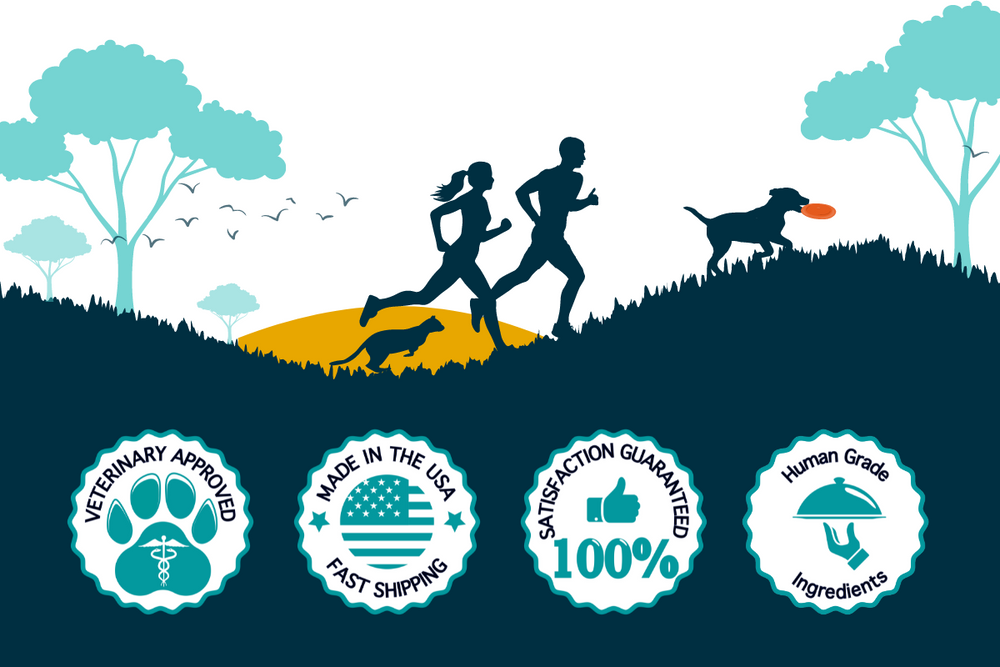Intro to Dog Agility 3: Agility Training Tips
That, of course, is the final product. When you start your training… you start, well, at the beginning!
A house isn’t built overnight, and just like any construction project, you need a solid foundation on which to build your relationship and your skills.
Dog agility training is unique in that both you and your dog are simultaneously the student and the teacher. As the handler, you are learning how to use your body and what commands to communicate to your dog.
You are teaching and training the dog to follow these commands and showing him how to perform the obstacles. The dog is learning the obstacles, but he is also teaching the handler how to speak with body language and motion, and how to read the course from the dog’s perspective.
It is all very intertwined! In the horse world, new riders learn to ride on experienced horses. This is not the case in agility unless you are training your second (or third, or fourth, or tenth!) agility dog.
So remember, you are your dog’s teacher, but he is also yours. Here are some helpful agility training tips about identifying a good instructor, choosing a reward, and starting with foundational exercises.
Agility Training Tips for Beginners
Characteristics of a Good Agility Instructor
If you have joined a club or are taking lessons, your instructor should guide you through the foundational training for your agility dog.
Foundational training includes teaching the dog how to follow the handling; how to commit to obstacles; and how to maneuver his body.
Obstacles should be introduced gradually and never should a dog be forced across, over, or through any obstacle. Your instructor should break things down into manageable steps and should always be explaining to you WHY you are doing things.
A good instructor will have reasons for his instructions and should be able to tell you the purpose of the training or instructions. One of the best agility training tips? Use common sense and trust your instincts.
If what your trainer is advising does not feel right to you or if your trainer is not listening to you, you do not have to follow his advice. Remember that you are your dog’s advocate and you are responsible for his safety and training.
Good instructors should make you feel comfortable, give you good reasons for their recommendations, and never make you feel badly for making mistakes. Mistakes are how one learns to be right! Remember, if you are confused, your dog will be too!
Do not hesitate to ask questions or for clarification. A good instructor will be happy you are trying to understand and learn to be the best handler and trainer for your dog.
Dog Motivation
Before you even start training, you need to figure out what motivates your dog. In other words, what your dog likes. No one works for free, and dogs’ motivators are not pieces of paper with $$$ printed on them! Some dogs like treats, some dogs like very specific treats, some dogs like squeaky toys, and some like tug toys…
The dog picks the reward and you may have to do some experimenting to figure out what motivates your dog. It is useful to have a way to throw the reward, so if you are using food, you want to be able to put the food in a container, pouch, or toy that can be easily thrown and found.
There exists many toys, food containers, and other reward options on the market. Once you have found what motivates your dog, you can begin training. Here are some foundational exercises that you can work on immediately. Even if you are training with a class, these exercises will fast track you to agility success.
Exercises that do not require equipment:
- Follow handling
- Send forward
- Turn
Here are exercises that will prepare your dog for the obstacles. Some dogs are brave while others can be tentative. Read your dog’s body language and remember to help him when he needs help.
Beginning obstacles training with no obstacles:
- Climbing on different surfaces
- Going around a cone/anything
- Weave between the legs
Remember that you are TEACHING your dog and just like you and me, he will make mistakes while he is working to figure things out. Mistakes are normal!
Do not penalize your dog for getting it “wrong.” Reward all efforts and reward with special emphasis (jackpot) if your dog makes a breakthrough or has a really good attempt.
If your dog is failing too many times in a row, you are probably making the task too hard for him. Use the rule that if your dog makes two mistakes in a row, you should change something to help him get it right.
Simplify, help, or even try another behavior to help him be successful. We do not want the dogs to feel discouraged while learning, so keep the tasks manageable in order for them to feel motivated, successful, engaged, and good about the learning process.
Training Frequency
Frequent short training sessions are ideal. Some dogs will lose enthusiasm or motivation with too many repetitions. Some even get bored if you keep asking them to do the same thing over and over! Sessions should be around 5-10 mins, but even shorter is fine! Doing one rep before each of your dog’s meals will go a long way.
Multiple short sessions throughout the day or over a few days is better than one long training session once a week. Last but not least, remember that dog agility is a game you play with your dog. It is and should always be fun! Sometimes stress is inevitable while learning new things.
This applies to both people and dogs. Some stress is okay, but if things are feeling overwhelming, again for either you or the dog, take a break. You should never feel like you are “working” and you should definitely never feel like you are “fighting.”
Dog agility training is a process and the more fun you are having, the more enjoyable it will be for you and the dog. So embark on this training journey with your partner and remember that you are his teacher as much as he is yours.










